
Many comic fans may know Marc Silvestri from his days as one of the seven co-founders of Image Comics or from his current role as CEO of Top Cow Productions, but his professional career in comics has spanned nearly three decades. His creative portfolio includes such titles as Cyber Force, Witchblade, The Darkness, and Hunter-Killer, to name a few. In addition, he has illustrated prolific runs on Uncanny X-Men and Wolverine for Marvel.
In the interview below, Marc discusses how he landed his first job with DC Comics in 1981, (which would ultimately launch his professional career in comics), his friendship with Michael Turner, and offers some unconventional advice for those who wish to enter the comics industry. He also shares his thoughts on the live action Witchblade TV show and its Japanese anime counterpart, plus much more.
So, whether you’re a die-hard Silvestri fan, a struggling comic artist, or an aspiring entrepreneur, this interview is a must-read! It is my pleasure to introduce a man who needs no introduction, September’s Artist of the Month, Marc Silvestri.
Comic Attack: To many fans, you are the epitome of success within the comic industry. What habits do you attribute to your ongoing and versatile career? Also, what advice would you give to those who wish to follow in your footsteps?
Marc Silvestri: Thank you. What has kept me interested in the comics industry is the constant evolving nature of creating something out of nothing. Ever since I was a kid, I have had a pretty vivid imagination. The world that I saw wasn’t necessarily the world I saw with my eyes, and that has never left me. Creating ideas and world concepts that are a little bit different from what we see on a daily basis will continually keep me inspired and interested to keep moving forward with my career. My advice for those who want to pursue this route or any other creative route, whether it be writing, painting, music, is to search within and see if you have the desire to tell stories and if you have stories you want to tell. That desire – it has to be literally part of your life, if not most of your life. Especially in the comic book world, you need to depend on those desires to get through the deadlines. Comics are a deadline business. You just got to love it; maybe not more than your dog, but you really have to love it.
CA: When did you land your first work for DC Comics? How did it happen?

MS: A lot of people don’t believe me, but I wasn’t a comic book reader when I was younger. My cousin however was a huge comic fan. When we were ten years old, he had thousands in his collection; he collected everything. I would sit around and look through the boxes and pick up what looked cool. I was artistically inclined; I would look at the splash pages but wouldn’t read the stories. Kind of like what people do with Playboy (laughs). When I was in my teens, my brother [Eric Silvestri] and I took a stab at a four to five page comic. I can’t recall why. I didn’t pursue anymore than that since I was just trying to tackle high school. It wasn’t until I was 20 that I tried again. At that time, I was too tall to be an astronaut (they do have a height requirement) and lacked the patience to be an architect. My cousin told me DC was hosting a talent search. It seemed special and important and big, and my brother and cousin both really pushed me to pursue it. I only seriously started working on a portfolio six months before the ’81 Chicago Comicon. I redrew the pages my brother had written up and included a number of pin-ups. None of which were superhero material. My biggest style influence at the time was Frank Franzetta. I focused on sci-fi, monsters and women—things that weren’t predominantly in comics at the time. When Chicago Comicon rolled around, I didn’t want to show my stuff. It was hard doing it for the first time; I was terrified. In line, you could hear all the critiques ahead of you. It felt like you were lining up for the firing squad. I definitely feel for the guys who are doing it today. There were two guys left in line – me and another guy, and they were over it. They were literally done. However, my brother wasn’t having any of it, so I couldn’t go home. I wouldn’t advise this method, but we went to Joe Orlando’s room and pretended to be room service. Despite his “Are you kidding me?” expression, he didn’t call security on us. He looked through my portfolio and proceeded to tear it to shreds. His “This sucks. This isn’t what we’re looking for” stopped when he came across the sequential comic book pages. Those four pages took me five months to do. But when Joe asked me how long it took me, I told him I could do a page a day. He told me I was going to have to speed that up a bit if you want to work at DC. You gotta lie – that’s official advice coming from me (laughs). I was hired the next week and was with them for a year. That doesn’t mean I knew what I was doing; I kept calling them asking what to do. What paper should I use? What dimensions? Where do I send it when I’m done?
CA: What events from 1982-1987 led to your well known four year run on Uncanny X-Men (1987-1990)?
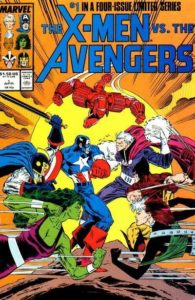
MS: At that time, I was doing Web of Spider-Man and I wasn’t happy with what I was doing. The culture of professional comics, the business, it made you feel lonely. Back then, no one [I] knew was doing it for a living. That’s why it’s important for me to have a studio today. So you can have a core group of individuals who are doing the same thing and [share an understanding]. At that time, I was thinking of getting out and switching gears. Then, they gave me the opportunity to take on X-Men vs Avengers, and back in the 80s, the X-Men couldn’t be any bigger. It was the premier title at Marvel; it was gold. That lead to [me] drawing X-Men and working with Chris Claremont. Marvel was doing about 15 issues a year, but I was happy by that point. It was exciting and rewarding, and [I was] just loving life (coupled with the fact that I had moved to Malibu by that point). I credit the Avengers title to getting me there.
CA: Your artwork evolved substantially over the course of your departure from Uncanny X-Men to your return to X-Men some fourteen years later. How did these projects differ in difficulty and approach?
MS: Hopefully, this is what the guys get out of working with me in the studio, but never lose the desire to get better in some way. If you stay dedicated to your craft, your work can’t help but change and evolve. The project’s difficulty didn’t change; I did. I’ve been inspired by the guys who come into the studio. For me and I mean this sincerely, when the day comes where I don’t or can’t improve, I should let someone else take over. Luckily, I don’t see that day coming any time soon. I try to stay fresh and look for new ways or disciplines that keep me interested in the material and just improve overall as an artist.
CA: How would you compare your role as a founding member of Image Comics to your current position of CEO of Top Cow Productions?
MS: There was a definite evolution between being a founding member of Image and being at Top Cow. When we started Image, God, I can’t believe it’s been that long—seventeen years. Image was born out of rebellion, youthful exuberance and the desire to shake things up. Our focus then, was to control our own designs and futures as much as we could. We were a band of guys who could create things; A-types who wanted to do our own thing. We were focused on our individual pursuits, but we also wanted to show that creators did have a say and that they did have more opportunities than just a page rate, if they wanted. I’m not being boastful, but I believe Image [Comics] and its legacy changed comics forever. Soon after, we reached the pinnacle of what we could do at that time. Today, at Top Cow, there’s still a rebellious spirit and fierce need to be independent and not to answer to anyone. The passion is here more than ever. The approach I’ve taken is one of affection as opposed to reacting in an angry and rebellious manner. Value and quality comes with time, and I hope it’s reflected in the natural extensions of our characters to other media in addition to publishing. It’s a second family to me. When you think of family, you don’t see what you’re doing as work. Top Cow is a reflection of who I am, of everyone who’s here today, who was here yesterday and of the future. We’re a small company and I’m proud of everyone in the company and where we are today.
CA: How often do you speak with the other original founders of Image Comics?
MS: We talk every once in a while. Todd, Erik and I would get on the phone. We call each other up when we’re bored just to talk some BS. And of course, we see each other at the meetings and we meet up at the cons. It’s a little difficult since we’re spread around. Todd [Mcfarlane] in Arizona, Erik [Larsen] in Oakland, Jim [Lee] in Seattle, and I’m here in Los Angeles. We don’t get to hang out together as often as we like, but when we get together at the cons, it’s like old times. We give each other a hard time, call each other names, just without the punching.
CA: When and how did you come to know Michael Turner, and how would you describe your personal and professional relationship with him?
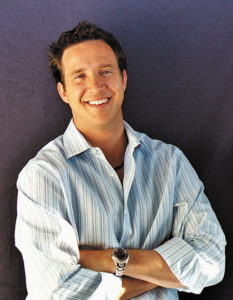
MS: The first time I met him, before I saw his work, Mike just struck me as this cool guy. We became friends right there. He had me at hello (laughs). This is a story I tell often. I had no idea who he was and he was suddenly just in the studio. Mike had showed David Wohl his portfolio during San Diego, and he brought him into the studio. He was a background-focused guy; I had no idea. Michael became legendary for his talent. So I can say it now: Back then, his portfolio was awful; I thought he must have charmed his way in. He wasn’t afraid of anything; he wasn’t intimidated by anything, by me, by the studio, by the work. [Joe] Benitez. [Billy] Tan. Me. He just wanted to learn. To get a feel for him, I asked him to draw me a building. It ended up looking like a vertical loaf more than anything. It wasn’t working so I picked up a book on New York off the shelf and turned to a random page. I told Mike to draw me this building. It was an old school building that wasn’t easy, but he wasn’t intimidated. He came back an hour later, and I was expecting to see another loaf of bread but with windows that time. I looked at him, at the reference. I couldn’t believe this was the same guy from an hour ago. His drawing looked like the photograph. I was blown away, and I asked him what the hell happened. He told me no one had told him to look at references before. He had all this talent and he didn’t know it. He drifted into comics with talent, and he didn’t even realize it. Mike was an incredible guy who just wanted to learn. He wouldn’t shy away from asking questions. In the beginning, we gave him trading cards since it would be a great way for him to learn. He blew me away; each character and trading card was better than the last. It was mind boggling that this was the same guy who showed me that portfolio. At the same time, our friendship was growing. We would go out, trade war stories. I came to really respect him as an artist, a creator and a friend. For a very long time, he was my closest friend, like a brother. We had a falling out and it was unfortunate. And then when he told us he got sick. We looked at each other, and he walked away. We couldn’t believe it; he wasn’t even 30 yet. Here was a guy who took in life every day, who was active. I had never felt what I felt before. It was inspiring to see him fight. He came back to the office after surgery on his crutches with a smile on his face and ready to work. That was pretty damn amazing. I’ll always remember that.
CA: What are your thoughts on the anime and live television adaptations of Witchblade?
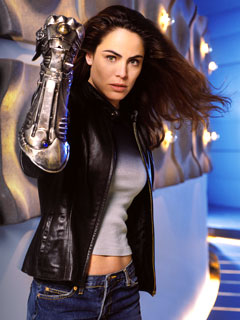
MS: I couldn’t be more proud of both the anime and live television adaptations of Witchblade. I think the live action Witchblade to this day was underappreciated. I just recently watched it for notes on the upcoming films, and looking back on it, it’s still very contemporary. CSI resembles it, and the live action Witchblade was made ten years ago. We’re proud that we were able to get a comic book series onto television, especially a comic book series that was driven by a female lead. That was unheard of at the time, and we were able to carry it without it being campy. You would be surprised by the effort we put into the show. I’m disappointed it didn’t have a bigger place in comic book history; I know it was overshadowed that year by other comic book properties that were adapted for film. Witchblade was a drama, led by a female and had great ratings. Some unfortunate circumstances brought the show to a halt, but we’re still very proud. I’m proud of the show runners, the actors involved, the writers, and for TNT and WB for taking a chance with it. The Witchblade anime did just as well. We were the first to have an American character transformed to a Japanese anime. There hadn’t been any other American character that was completely transformed. The concept is strong enough that a different time, a different country to pick it up. While the character is different, she’s immediately recognizable as the Witchblade. Gonzo did a great job. It rated well on Japanese television; we came out 17 out of 90 shows that season. We hope to continue the success with the Witchblade feature film.
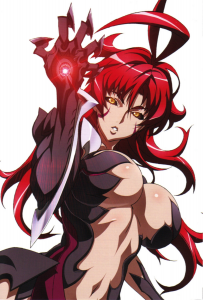
CA: To date, what’s the official status of The Darkness and Magdalena movies?
MS: We’re not rushing things; they’re both in development. We could churn something out quickly, but we want to make sure there’s a quality script and quality people attached to the projects. Things are definitely in motion.
CA: This last decade has been the era of the comic book movie genre. Are there any other movies planned for Top Cow’s characters in the near feature?
MS: We do have film adaptations in the works that I’m excited for. Some are public known like Magdalena, Alibi and Crosshairs, which was just recently announced at Comic-Con International in San Diego. And there are some that aren’t. But all of which, I’m excited for. They’ll have a Top Cow flair and we promise that the fans of the books won’t be disappointed.
CA: There are lots of defining characteristics of your artwork, but what strikes me most is the facial features of your characters. What has most influenced your particular style in developing these bold characteristics?
MS: It goes back to what I’ve been saying about looking at the world in a different manner. The way I look at comic books is similar to how Hollywood looks at movies or TV at soaps. It’s idealized. The male and female characters are wish fulfillment, which is how I’ve always viewed it. I appreciate those who draw people that look like regular people, but that’s not why I look at comics, why I draw comics. I like the romanticized version of life. It’s a heightened reality. James Bond can’t possibly exist, yet he’s the coolest guy on the block. It’s like that. Everything I like is an idealized version of who we are in the world, like sci-fi. Mike [Turner] and I used to talk about this, but we concentrated heavily on the eyes—that’s been one of the defining features. You should be able to know everything the characters are feeling through the face without any aid from text.
CA: Another unique aspect of your artwork is the integration of mystical/cybernetic armor onto various characters’ bodies. When did you begin utilizing this concept in your character sketches, and what are its origins?
MS: I had mentioned this earlier, but I didn’t grow up on superhero comics. I was a sci-fi kid. The mystical/cybernetic approach appeared early in my works. I wanted to differentiate myself from the spandex and capes that dominated the market. I wanted to blend the notion of a hero with supernatural stuff. Our characters at Top Cow weren’t bitten by radioactive spiders; the Witchblade and the Darkness inherited fantastical powers that they’re stuck with. Mainstream comics weren’t doing this back then; I wanted to build a universe that was different from Marvel and DC’s. Supernatural and sci-fi has been a perfect combo for me.
CA: What is your main reference for your female characters (mental, photos, live models, ect.)?
MS: I’ve certainly used my wife for reference. I’m not a fan of direct photo reference; that’s reserved for stuff I can’t figure out. I try to remember what I’ve seen and just put my own spin on it. The men and women I draw are idealized versions of real life.
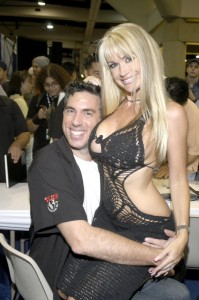
CA: Your illustrations of the female frame are the subject of many fan boys’ fantasies, as is your lovely wife (respectfully). How did you meet her?
MS: I drew Bridget and she just popped out just like Jessica Rabbit (laughs). I met her through mutual friends, and we’re about to celebrate our 9th anniversary. I met her ten years ago, and she’s this most beautiful, kind and funny being. She used to get upset in the early days of our relationship; she was getting used to this strange celebrity nature. She had read a few posts on the Internet that were depicting her in this light, putting her in an unflattering category. I told her not to worry about it, and she did have those defending her on those same posts. She’s just a really kind-hearted person that girls who haven’t met her wouldn’t realize until they came to the booths at the cons.
CA: What character is your most treasured creation during your career as a comic creator (which do you hold closest to your heart)?
MS: I can’t just choose one. The Darkness will always be there; it’s very personal for me. Hunter-Killer is also one of my favorite concepts and I loved working with Mark Waid. Cyberforce, of course. Witchbalde is another character that holds a special place. There’s a lot of characters and titles that we’ve done that I have lots of affection for, but those are what I cherish the most.
CA: Are you currently working on any projects (creating, illustrating, or otherwise)? If so, what are they?
MS: Always. You’ll see.
CA: Artifacts just launched. Can you tell us about that and what’s the next big event/project/comic coming from Top Cow Productions?
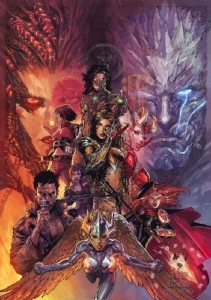
MS: Artifacts is the biggest thing we’ve done. It will change the Top Cow Universe, but not in a gimmicky way. We’ll mix things up in a real way and we have terrific artists involved. I don’t want to give it away and I don’t want to be coy, but there’s going to be lots of WTF moments, as many have seen with the first issue already. From Artifacts, we’ll spring new concepts. And those new concepts will spring our next big projects. Artifacts took five years to mature, so it’s too soon to say. Just know that when it comes to comics and projects and events, Top Cow’s main emphasis is quality. Quality in the creative talents we pair up and quality in the stories we want to create and tell.
CA: OK, here’s your chance to promote anything (Top Cow Productions related or otherwise) that I haven’t mentioned in the interview!
MS: I think we’ve covered it all. Thanks for sharing our Universe with new readers and for believing in the quality we’re putting out.
CA: My pleasure!
Now for an exclusive look at some of Marc Silvestri’s previously unpublished sketches:
I would like to personally thank Marc for taking time out of his extremely busy schedule, and answering my questions with thoughtful and candid responses. It is much appreciated by myself, as well as the ComicAttack.net family. Marc Silvestri is very deserving of the title of Artist of the Month, and continues to be a valuable asset to the comic industry and to those who love great comics! Also, for what it’s worth, he’s a very cool guy.
Josh Jones
josh@comicattack.net

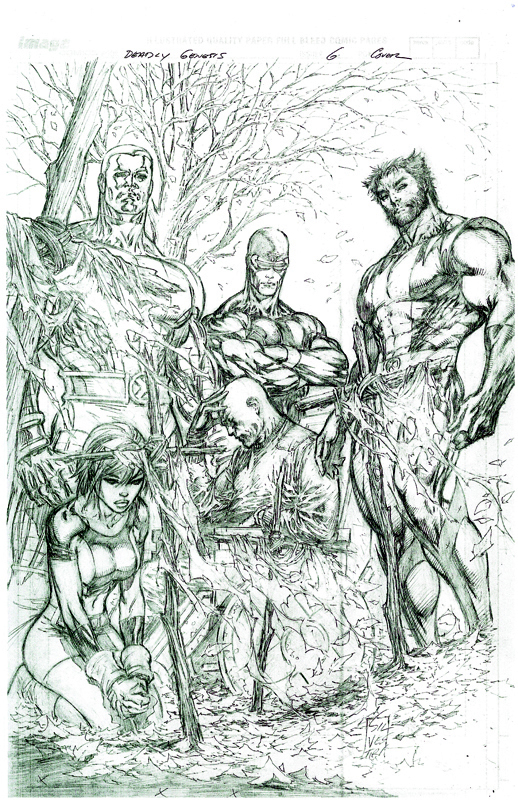

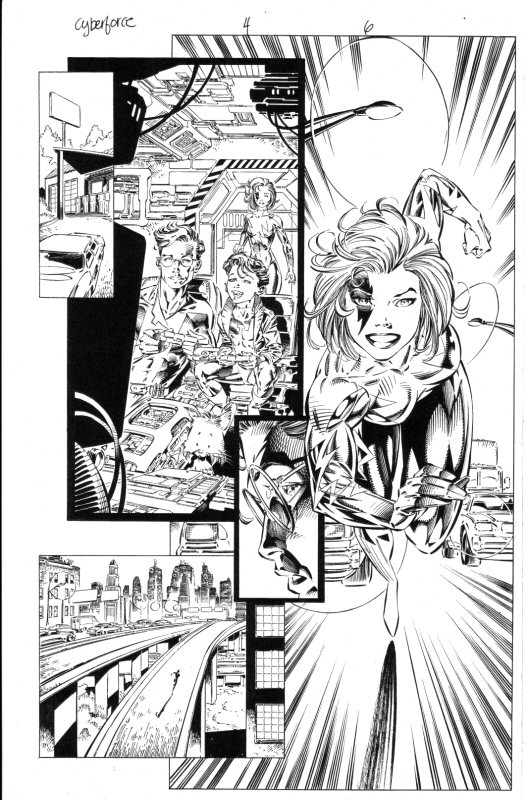
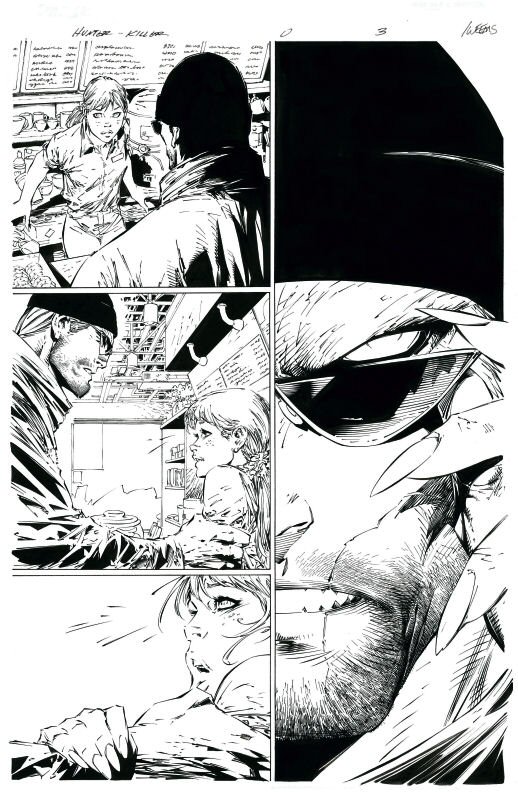
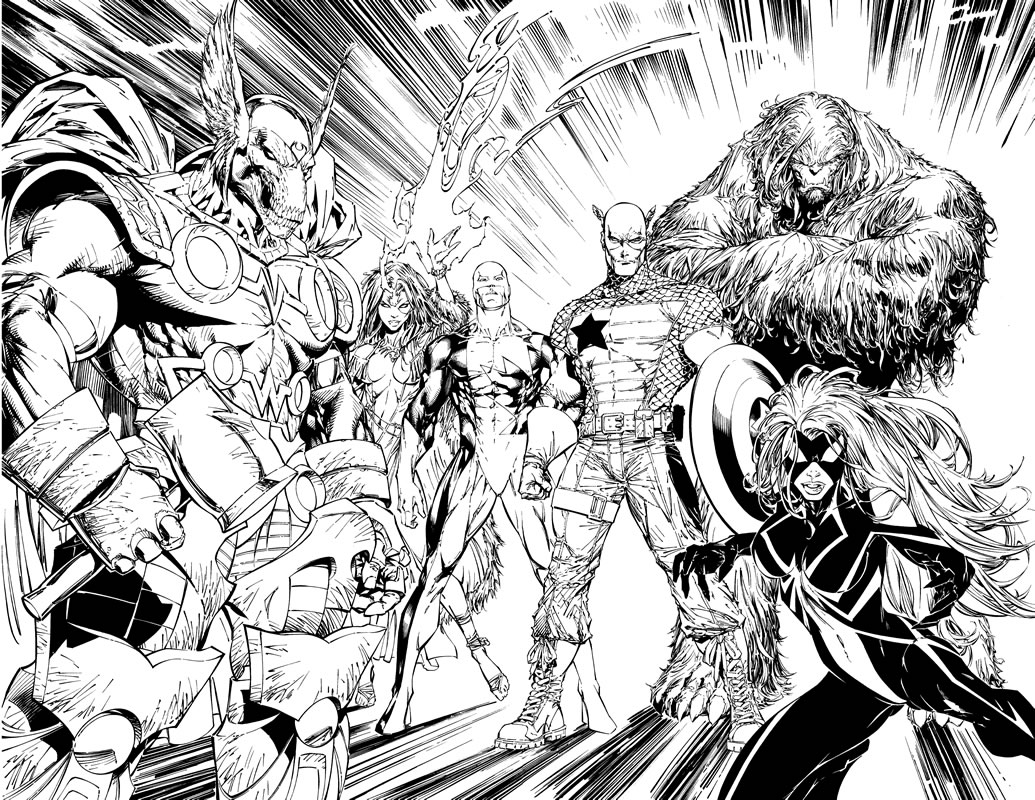

Great read as always. It should be your quest to profile all the Image founders.
Way to get answers from the heart in this interview. Great questions, Josh! Way better than the Adam Carolla interview at Comic Con with his cue cards! 🙂
One of the best….
Wow, great interview. Silvestri is really cool and hope Top Cow does nothing but skyrocket!
Silvestri is just one of the best to ever do it and the fact that he’s passing on that knowledge and experience to others is just a great thing as well. Very good interview guys!
WOW!
That was incredibly inspiring to read, I admire mr. Silvestri since I have 8 years.
I know he won´t read this but “THANK YOU FOR INSPIRE ME”
Pingback: Free Comic Book Day 2011 Gold Line Up
Pingback: Image Reviews: Spawn #200
Pingback: Writers Filip Sablik & Jim McCann Get Inked at Collector’s Paradise!